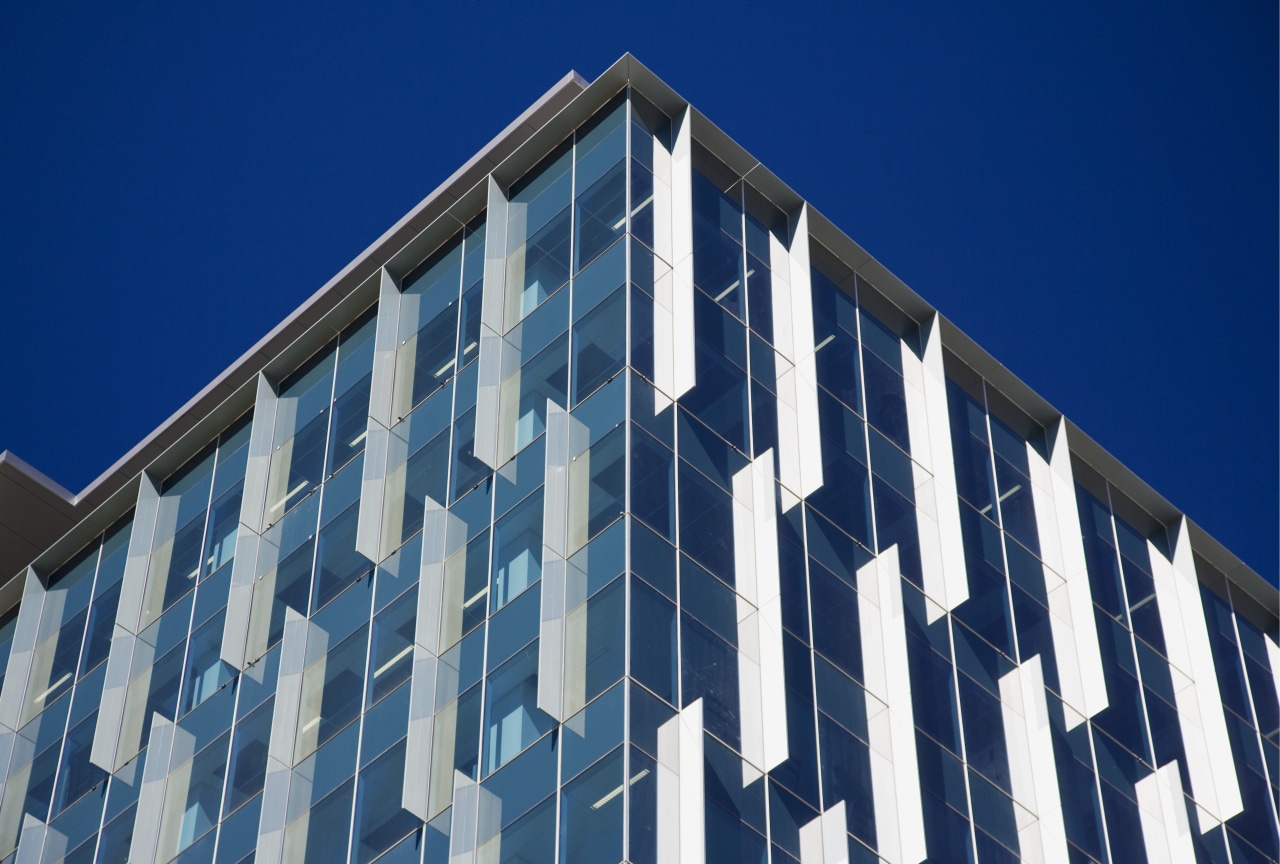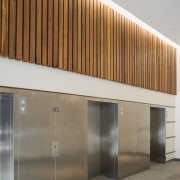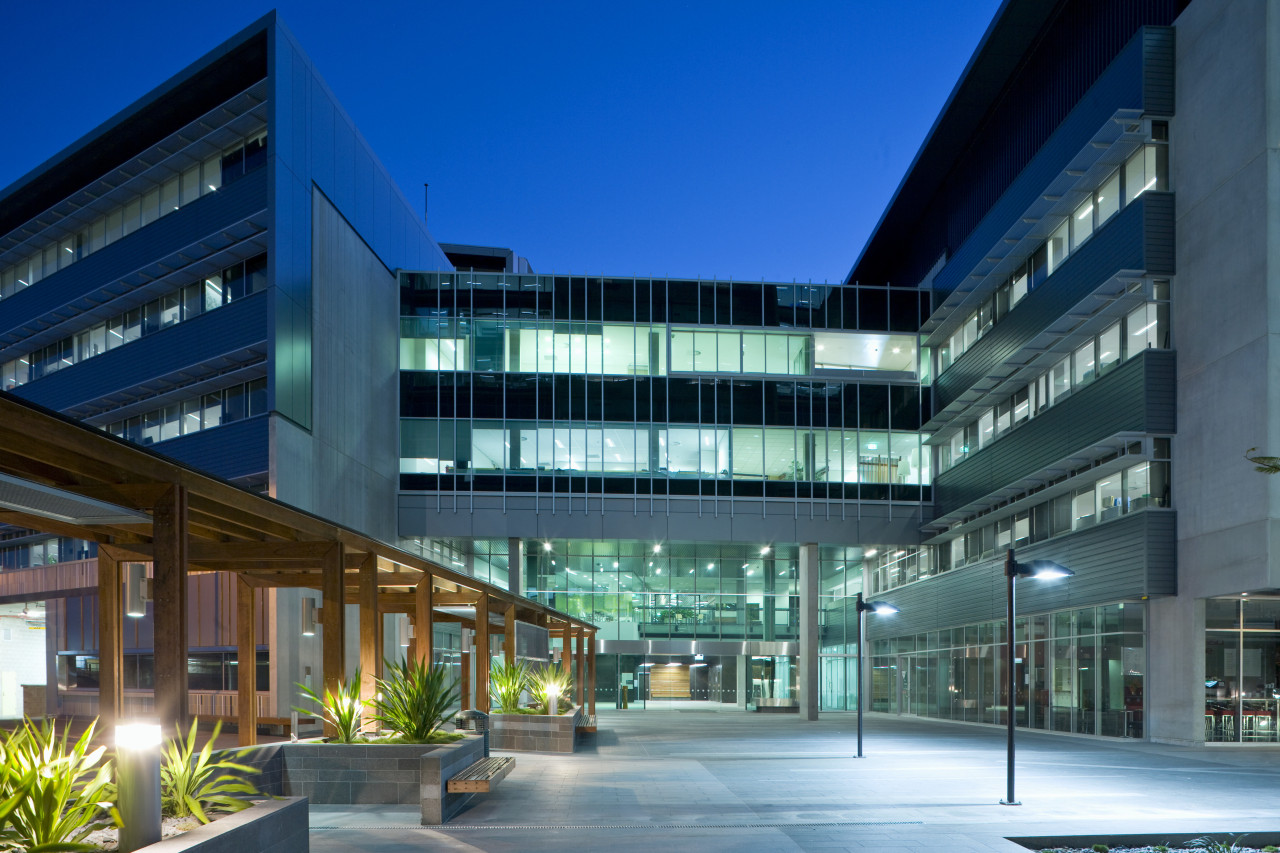Leading light
A well-resourced, experienced contractor was needed to draw together North Tower and supply two integrated fit-outs. Leighton Contractors undertook the role from planning to completion

North Tower has energy-saving and sustainability elements running through every aspect of its design. Conceived by Leighton Properties, it was Leighton Contractors that stepped up to select, design and deliver the ground-breaking green initiatives.
Leighton Contractors Northern Region has been part of the Queensland construction industry since its first Brisbane office opened 45 years ago. As one of Australia's largest, best-resourced contractors, the company was well placed to create the Green Square development and integrated fit-outs within the two office towers. Leighton Contractors' project manager of Green Square North Tower, Tony Joslin, says that while the building has achieved a 6-Star Green Star rating, the initiatives selected also stack up from a long-term commercial point of view.
"We have consciously avoided the use of any gimmicky green measures that do not significantly contribute to the performance of the building."
A 6-Star Green Star rating signifies world leadership in sustainability and does not come lightly. The easiest way to understand the breadth and scope of Leighton Contractors' undertaking is to look at the various measures addressed.
"One of the most important elements of the tower is the introduction of co-generation to the building services," says Joslin. "Co-generation is a process whereby power is generated on site using a gas engine-driven generator. Heat energy produced as a by-product of the generation process is then used to provide free cooling for the air conditioning system."
The major advantage of co-generation is the reduction in CO2 emissions. Leighton Contractors' services manager, Mark Sanders, says that co-generation further reduces the building's CO2 emission rate by 49%. The initial CO2 emission rate of 51kgCO2/m²/annum was achieved by including a plethora of well-designed sustainable measures, but co-generation has contributed the single largest reduction in CO2.
To further reduce emissions, Leighton has, in an Australian first for commercial office buildings, introduced a Selective Catalytic Reduction (SCR) system. SCR is a post-combustion control technology which reduces the North Tower's nitrogen oxide emissions (smog) by 85% and also reduces the carbon monoxide emissions by 90%, which is another contributor to the greenhouse effect. Co-generation is recognised by the Green Building Council of Australia Green Star system by providing points under the Energy Improvement and Peak Energy Demand Reduction credits. When compared to a building that has a good energy rating in Queensland and achieves a 5-Star ABGR of 76kgCO2/m²/annum, Green Square North Tower achieves a reduction in CO2 emissions of 1163 tonnes per year.
In terms of caring for our planet, sustainability goes hand in hand with energy savings. The North Tower stands proud in this regard. It is built from 60% recycled steel, 40% recycled concrete and incorporates a high-performance facade. CO2 reduction through reduced motorised transport requirements are also made on a personal, day-to-day level. Cyclist facilities for 156 staff have been introduced, with dedicated showers and lockers and an additional 35 bicycle racks for visitors. This not only reduces CO2 emissions, but also keeps the concept of ecology in the mind's eye of Green Square North Tower staff.
The incorporation of an integrated fit-out for a third of the building for the Crime & Misconduct Commission brought valuable future savings on materials. Interior environment quality was another essential aspect of the North Tower's Green Star success, and central to the building's rapid full tenancy take-up.
Other elements include low volatile organic compound content in materials and finishes, glare-free lighting, and thermal modelling to ensure optimum comfort for occupants. Aesthetics may not affect energy levels but they do affect the quality of work environment external view corridors complete the picture of a healthy, inviting workplace.

Green Square North Tower was delivered some three months ahead of the contract date. According to senior project engineer James Davies, Leighton Contractors' success in designing and building quickly, while providing work leadership in sustainability, was through its excellent relationships with designers, contractors, authorities and the client. The collaborative environment was achieved through a mix of formal and informal relationship management, initiated by Leighton Contractors. Davies says this effort has brought the wider project team together and focused the efforts of all stakeholders on agreed mutual objectives. It has also made Green Square North Tower a great job to work on, not only for Leighton Contractors, but for the entire project team.
"All these points from close teamwork down to energy-efficient lightbulbs contribute to a building that quite simply respects the planet's fragile ecology and the energy budgets of its tenants," says Joslin. "Leighton Contractors is proud to be involved in the first completed Queensland office building to achieve a 6-Star Green Star rating Green Square North Tower presents an ecological signpost for our times."
For further details, contact Leighton Contractors, phone (07) 3215 4400. Or visit the website: www.leightoncontractors.com.au.
Story by: Trendsideas
Home kitchen bathroom commercial design








